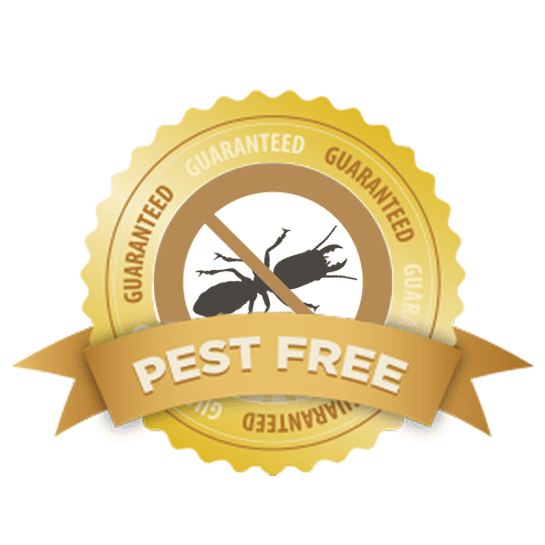Trusted A1 Exterminator Charlotte NC - Comprehensive Pest Solutions
Trusted A1 Exterminator Charlotte NC - Comprehensive Pest Solutions
Blog Article
Bed Pest Treatment Malfunction: Comparing Chemical Vs. Non-Chemical Solutions
In the world of parasite control, particularly when handling the persistent issue of bed pests, the choice in between chemical and non-chemical therapy remedies can be a critical one. Both strategies offer unique advantages and downsides, affecting variables such as effectiveness, security considerations, and total cost. By taking a look at the nuanced details of each method, a more clear understanding of which path to pursue in attending to a bed pest infestation can be attained.
Effectiveness of Chemical Therapies
Chemical treatments for bed pest infestations have been commonly acknowledged for their rapid and potent effectiveness in eliminating these insects. When considering the efficiency of chemical treatments, it is important to recognize that they can supply a quick and detailed service to a bed bug problem.
In addition, chemical treatments have the benefit of supplying recurring impacts, meaning that they can continue to eliminate bed pests even after the initial application. This residual activity is particularly beneficial in combating any kind of prospective re-infestations. In addition, the fast action of chemical therapies can bring relief to individuals facing severe bed pest invasions, allowing them to gain back control of their living spaces quickly.
Security Worries With Chemical Solutions
One critical aspect that requires careful factor to consider when making use of chemical solutions for bed bug therapy is ensuring the security of passengers and the environment. Direct exposure to specific chemicals utilized in bed bug therapies can lead to breathing concerns, skin irritability, or various other damaging reactions, especially in people with pre-existing problems or sensitivities.
In addition, the environmental effect of chemical services is one more substantial factor to consider. Some chemicals made use of in bed insect treatments may be hazardous to valuable bugs, wildlife, and communities if they leach right into the soil or water systems. It is necessary to use chemical therapies sensibly, complying with security standards, and considering much less harmful choices to mitigate these dangers and guarantee the safe and effective management of bed pest problems.
Advantages of Non-Chemical Techniques
Thinking about the potential safety and security issues and environmental impact connected with chemical solutions for bed insect treatment, discovering non-chemical strategies offers an encouraging option with numerous unique advantages. Non-chemical approaches offer a safer alternative for homes, specifically those with individuals, pet dogs, or kids sensitive to extreme chemicals. These methods eliminate the risks of direct exposure to harmful substances, lowering the possibility for damaging health and wellness results. In addition, non-chemical treatments are eco friendly, as they do not add to air or water contamination, making them a lasting choice for insect control.
Additionally, non-chemical services can be effective in targeting bed insects, consisting of hard-to-reach locations where chemical therapies might not pass through. Methods such as heat treatment, vacuuming, heavy steam cleaning, and bed mattress encasements offer extensive obliteration without using unsafe chemicals. Furthermore, non-chemical strategies can be much less turbulent, calling for minimal preparation Learn More and permitting quicker reentry into treated areas. In general, going with non-chemical bed insect treatment approaches not just prioritizes security and environmental security however also makes certain detailed and reliable bug control.
Limitations of Non-Chemical Treatments

In addition, non-chemical therapies often need several applications to attain successful obliteration. This can be taxing and might not constantly assure full removal of all bed insects and their eggs, specifically in hard-to-reach or covert areas.
Furthermore, the success of non-chemical therapies greatly counts on correct implementation and thoroughness, which can be challenging for individuals without professional expertise. Inadequate application of non-chemical methods might lead to insufficient obliteration, leading to consistent infestations and the need for added treatments.
Therefore, while non-chemical treatments have their benefits, it is vital to recognize these restrictions and consider them when establishing the most efficient technique for taking care of bed pest invasions.
Price Comparison: Chemical Vs. Non-Chemical Options
Given the constraints connected with non-chemical therapies, an essential aspect to evaluate in the context of bed bug administration is the expense contrast in between chemical and non-chemical options. Chemical therapies usually involve the application of pesticides by experts, which can range from $250 to $900 per area, depending on the extent of the infestation and the dimension of the location to be treated. In comparison, non-chemical therapies like warmth therapy or heavy steam can be a lot more costly, with costs Visit This Link ranging from $1,000 to $6,000 for an entire home. While the preliminary price of chemical treatments might seem reduced, numerous treatments might be called for to completely eradicate the infestation, potentially raising the general cost. On the various other hand, non-chemical alternatives may supply a more sustainable and eco-friendly solution, although they can be cost-prohibitive for some individuals. Eventually, when thinking about the price of bed insect treatment options, it is necessary to consider the upfront expenditures against the performance and long-term sustainability of the selected technique.
Conclusion

Considering the anchor possible security concerns and environmental effect linked with chemical solutions for bed bug treatment, discovering non-chemical methods presents a promising option with several distinct advantages.Offered the limitations associated with non-chemical treatments, an essential element to review in the context of bed pest management is the cost contrast between chemical and non-chemical choices. In contrast, non-chemical treatments like warmth treatment or vapor can be a lot more costly, with costs ranging from $1,000 to $6,000 for an entire home. While the initial price of chemical treatments may seem reduced, numerous therapies might be called for to fully get rid of the invasion, possibly raising the overall expense.In verdict, when contrasting chemical and non-chemical bed insect therapy choices, it is important to think about effectiveness, safety and security, benefits, restrictions, and cost.
Report this page